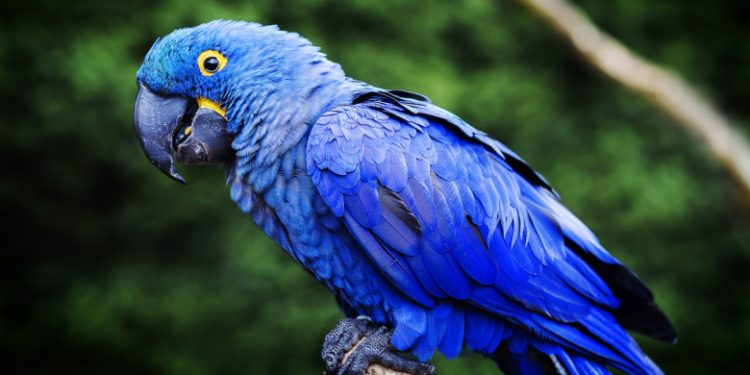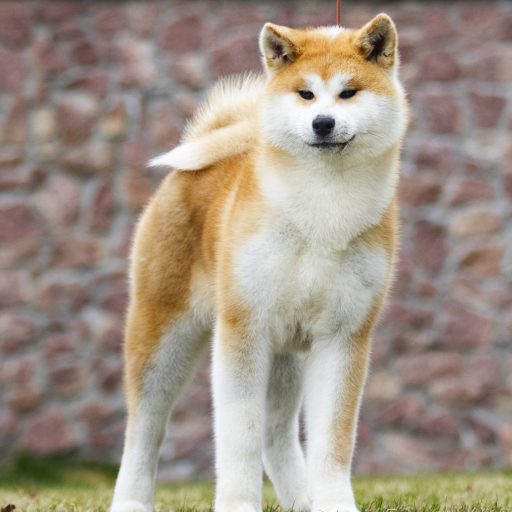Endowed with cobalt blue plumage of rare beauty, the hyacinth macaw is the largest representative of the Psittacidae taxon. One of the main characteristics of this bird is its powerful timbre, which it makes frequent use of. Due to its size and vivacity, it needs large spaces to live happily.
Geographical area
The Hyacinth Macaw lives mainly in South America, and more particularly in Brazil in the tropical forests of the Cerrado and Pantal regions, as well as in Bolivia and Paraguay.
Breed History
It was the famous British ornithologist John Latham who was the first to study and describe the hyacinth macaw in 1790. He had the opportunity to examine one imported to England. More than 70 years later, Henry Walter Bates was able to observe it in its natural environment.
Today, the hyacinth macaw is an endangered species. It is considered vulnerable according to its IUCN (International Union for Conservation of Nature) conservation status. This beautiful bird is, in fact, a victim of poaching. It is mainly hunted for its feathers. A rescue and reproduction program in captivity is currently being carried out with the aim of preserving its numbers. It is estimated that the number of individuals living in their natural environment is around 2000, whereas this population was 50 times higher a few decades ago.
Physical peculiarities
With its wingspan of up to 150 cm, the hyacinth macaw can be recognized by its magnificent cobalt blue plumage. The color is slightly lighter at the head. It is darker on the wings and undertail.
The eye is surrounded by a yellow mark, as is the lower jaw of the beak. The latter is blackish and particularly powerful, with a pressure reaching 15 kg/cm2. The legs are dark grey.
The iris is brown in color.
A bird of imposing stature and wingspan (up to 1.5 meters), the Hyacinth Macaw is the largest of all psittacines, reaching 1 meter in adulthood. It is however not the heaviest; it is the Kakapo (or owl parrot) who is, weighing 3 kg and being unable to fly.
Behavior and character
Endowed with a very powerful voice, the Hyacinth Macaw frequently expresses itself through it by emitting different types of cries depending on the situation. When it flies in pairs, for example, they allow it to maintain contact with the partner. In community, the bird tends to growl and can even yelp reminiscent of those of the puppy. And when alert, the Hyacinth Macaw gives more squeaky calls.
Generally, it prefers to lead a solitary life or in pairs, especially during the nesting season, but groups of up to 20 individuals can be found in certain regions.
Feed
The hyacinth macaw’s favorite food is palm nuts, the shell of which it easily manages to break with its powerful beak. He is also not reluctant to eat fallen fruit, especially after a fire. Figs and a few other fruits are also on his menu.
If it has the opportunity, the Hyacinth Macaw willingly consumes freshwater molluscs such as ampullaris.
Reproduction
The hyacinth macaw’s nesting season is highly variable depending on the region. It can start in October or July, and end in December, January or February.
Generally, there are 2 eggs per clutch. Incubation lasts 27 to 30 days.
Young birds leave the nest around 14 weeks of age.
Health
Well acclimatized, the hyacinth macaw is a reputedly robust bird. It does not pose a major health problem as long as it receives appropriate nutrition and care.
Way of life
Due to its large size, the Hyacinth Macaw needs a lot of space to be happy. It therefore needs a large cage allowing it to spread its wings. Ideally, we could dedicate a small room to it.
It should also be remembered that it does not hesitate to use the power of its beak, hence the need to leave hardwood objects and branches at its disposal.
All of the accessories for the hyacinth macaw are chosen for their robustness, including the perches.












